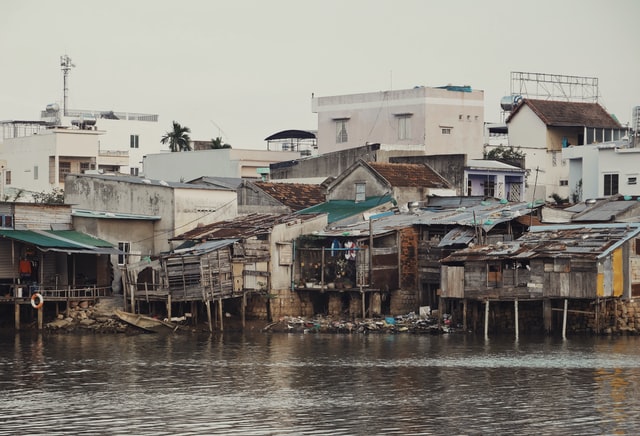More than 10% of the world’s population live in severe poverty – but do you know why? We take a look at 9 of the leading drivers of international hardship.

Picture it: you need to feed your family, travel to and from work, and get your kid school materials. However you only have $1.90 in your pocket. It looks like a difficult scenario. For roughly 800 million individuals in the world, it’s their truth. 11% of the world’s population is living in extreme poverty, which is specified as enduring on only $1.90 a day.
As alarming as those figures are, there is some excellent news: In 1990, 35% of the world (1.8 billion people) was residing in severe poverty – so we have actually made some substantial strides. While many argue that we will never ever be able to genuinely get rid of hardship, extreme poverty can be gotten rid of. Sadly, there is no “magic bullet” solution, however if we want to eliminate severe poverty, we must first understand its causes. Here, we take a look at a few of the leading reasons for poverty all over the world.
Insufficient access to clean water and healthy food
Presently, more than 2 billion people don’t have access to tidy water in your home, while over 800 million struggle with hunger. You might believe that poverty causes cravings and prevents people from accessing tidy water (and you would be right!), however hunger and water insecurity are likewise big reasons individuals struggle to escape severe poverty.
If an individual does not get adequate food, they merely do not have the strength and energy needed to work, while absence of access to food and tidy water can likewise result in avoidable illnesses like diarrhea. And when people should travel far distances to clinics or invest what little money remains on medicine, it drains already vulnerable populations of cash and assets, and can knock a household from poverty into extreme hardship.
Even if tidy water sources are available, they’re typically located far from bad, rural communities. This implies that ladies and women jointly spend some 200 million hours every day walking cross countries to bring water. That’s precious time that could be utilized working, or getting an education to assist protect a job later in life.
Little or no access to livelihoods or jobs
This might appear a bit like a “no brainer.” Without a job or a method to earn money, individuals will face poverty. It’s easy to assume that if somebody wants a task, they might have one. That just isn’t true, particularly in developing and rural parts of the world. Diminishing access to productive land (frequently due to conflict, overpopulation, or environment change), and overexploitation of resources like fish or minerals is putting increasing pressure on lots of conventional incomes. In the Democratic Republic of Congo (DRC) for instance, the majority of the population lives in rural neighborhoods where natural deposits have been plundered over centuries of colonialism– while dispute over land conflicts has forced individuals from the land they relied upon for food and cash. Now, majority of the country resides in extreme hardship. While irregular work and low paying jobs can land a family in hardship, absolutely no work suggests that a family can’t manage without assistance.
Conflict
Conflict can cause poverty in several methods. Big scale, drawn-out violence that we see in places like Syria can grind society to a stop, destroy infrastructure, and cause people to flee, forcing households to offer or leave all their possessions. In Syria, around 70% of the entire population now lives listed below the poverty line– this in a country where extreme poverty was once extremely unusual. Females frequently bear the brunt of conflict: during durations of violence, female-headed households become really common. And since females typically have problem getting well-paying work and are generally left out from neighborhood decision-making, their households are especially vulnerable.
Even small bouts of violence can have huge effects on communities that are currently having a hard time. For example, if farmers are stressed over their crops being stolen, they will not purchase planting. Females are particularly susceptible in these kinds of conflicts, too, as they often end up being the targets of sexual violence while bring water or working alone in the fields.
Inequality
There are various kinds of inequality worldwide, from financial to social inequalities like gender, caste systems, or tribal associations. But no matter the inequality, it generally implies the exact same thing: unequal or no access to the resources required to keep or lift a family out of hardship.
In some cases inequalities are obvious, however in other situations, it can be subtle– for instance, the voices of particular individuals or groups might not be heard in community meetings, indicating they don’t get a say in crucial decisions. Regardless, these inequalities suggest that the people impacted don’t have the tools they frantically need to get ahead, and for already vulnerable families, this can imply the difference between being poor or living in extreme hardship.
Poor education
Not everyone without an education is living in severe poverty. Many of the very bad don’t have an education. And why is that? There’s a great deal of barriers stopping children from going to school. Numerous families can’t manage to send their kids to school and need them to work. More still do not see a benefit in informing ladies. Education is typically referred to as the fantastic equalizer, and that’s since education can open the door to tasks and other resources and skills that a family needs to not simply survive, however thrive. UNESCO estimates that 171 million people could be lifted out of extreme hardship if they left school with basic reading skills. And, with much more education, world poverty could be cut in half.
Climate change
You might be stunned to discover that the World Bank approximates that environment modification has the power to push more than 100 million individuals into poverty over the next 10 years. As it is, climate occasions like dry spell, flooding, and serious storms disproportionately affect neighborhoods currently residing in hardship. Why? Because a number of the world’s poorest populations count on farming or hunting and event to eat and make money. They often have only just adequate food and assets to last through the next season, and insufficient reserves to fall back on in case of a poor harvest. When natural disasters (including the widespread dry spells caused by El Niño) leave millions of people without food, it pushes them even more into hardship, and can make recovery even more tough.
Absence of infrastructure
Think of that you have to go to work, or to the store, however there are no roads to get you there. Or heavy rains have flooded your route and made it blockaded. What would you do then? An absence of infrastructure– from roadways, bridges, and wells to cables for light, mobile phone, and internet– can separate communities living in backwoods. Living “off the grid” means the failure to go to school, work, or market to buy and sell items. Taking a trip farther ranges to gain access to standard services not only takes some time, it costs money, keeping households in poverty. Seclusion limits chance, and without opportunity, numerous discover it hard, if not difficult, to leave extreme poverty.
Restricted capability of the federal government
Lots of people living in the United States are familiar with social welfare programs that people can access if they require health care or food help. Not every federal government can supply this type of help to its people– and without that safety internet, there’s nothing to stop vulnerable families from backsliding further into extreme poverty if something goes wrong. Inadequate governments likewise add to numerous of the other causes of severe hardship discussed above, as they are unable to offer necessary facilities or make sure the safety and security of their residents in the event of dispute.
Lack of reserves
Individuals living in hardship do not have the methods to weather the storms of life. So when there is a drought, or conflict, or disease, there is little cash saved or assets on hand to assist. In Ethiopia for instance, repeated cycles of drought have actually caused harvest after harvest to stop working, causing a prevalent cravings crisis. To cope, households will pull their children from school, and sell everything they own to eat. That can help a family make it through one bad season, however not another. For neighborhoods constantly dealing with environmental extremes or prolonged conflict, the repeated shocks can send a household reeling into severe hardship and avoid them from ever recovering.
Facebook Comments
